What are VESA sizes and standards in a TV, what do they mean and what are they used for?
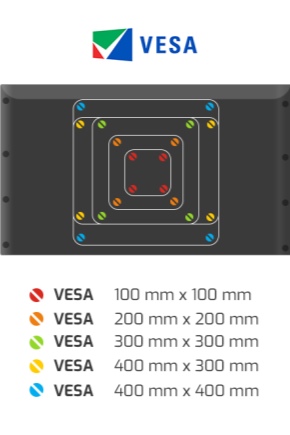
Most modern flat panel TVs and plasma panels have holes for a bracket that allows you to mount them on a wall. For the sizes of these holes, the international organization VESA has developed a single standard that all well-known manufacturers of household appliances adhere to. Therefore, when preparing for the purchase and installation of a new TV, it is worth understanding what the dimensions and VESA standards are in the TV, what they mean and what they are used for.
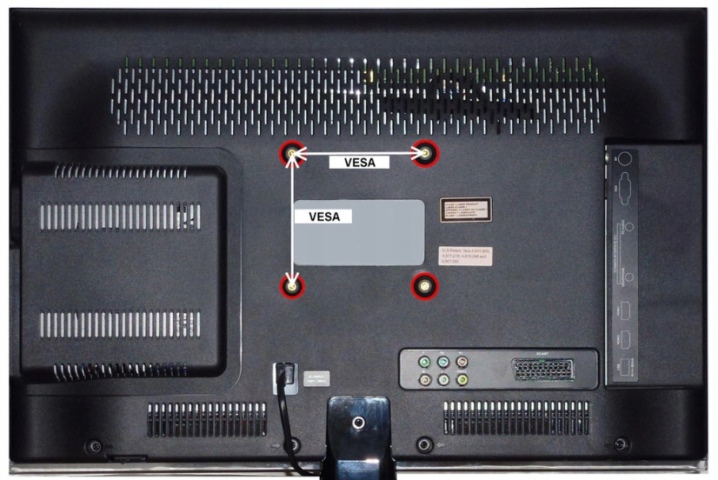
What is VESA size?
VESA was founded in 1989 with the participation of 9 leading world manufacturers of household appliances and was initially engaged in the standardization of multimedia formats. Gradually, the scope of VESA expanded and began to cover all aspects related to television and multimedia, including mounting standards.
The VESA standard for TV mount hole sizes is called FDMI. (which means "flat panel mounting interface"). This standard defines the relative position and diameter of the holes for attaching a special bracket to the TV cabinet. The number of bolt holes is always 4, and they are located in the corners of a rectangle, the length of the sides of which is determined by VESA.
Interestingly, the same standard defines not only the location and diameter of the holes for fasteners, but also the position of the connectors for connecting various cables.
This is done so that all cables can be freely connected with a VESA-compatible bracket installed.
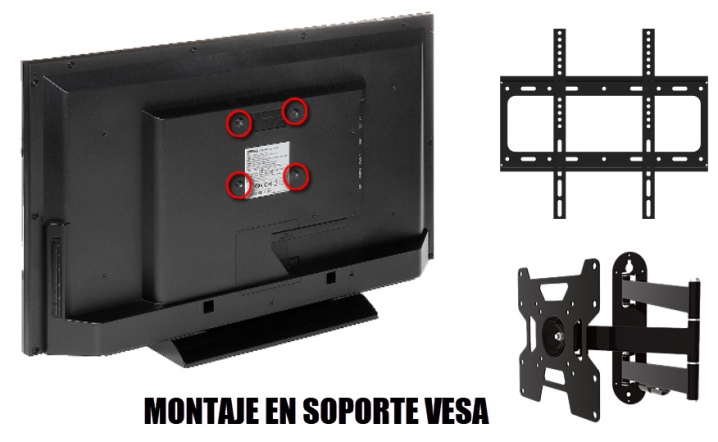
Standards
The following main VESA FDMI standards are currently adopted.
- MIS-B - fixing holes for M4 bolts are located in the corners of a rectangle measuring 50 × 20 mm. The standard applies to TVs with a diagonal of less than 7.9 "and a mass of less than 2 kg.
- MIS-C - differs from the previous standard in that the sides of the rectangle are 75 and 35 mm. It is used in TVs weighing from 2 to 4.5 kg with a diagonal of 8 to 11.9 ".
- MIS-D 75 - holes are located in the corners of a square with dimensions of 75 × 75 mm, M4 fasteners are used. It is used for devices with a diagonal from 12 to 22.9 "weighing up to 14 kg.
- MIS-D 100 - differs from the previous standard in that the side of the square is 100 mm and not 75 mm. It is used in TV models with a diagonal from 12 to 22.9 "and weighing up to 22.7 kg.
- MIS-E - holes for fasteners are located in the corners of a rectangle with dimensions of 200 × 100 mm, M4 fasteners are used. Such a mount is used in equipment with a diagonal from 23 to 30.9 "weighing less than 50 kg.

MIS-F - This standard was introduced in 2006 for TVs and Plasma panels with a diagonal from 31 to 90 "weighing up to 113.6 kg and, unlike previous versions, is a whole set of possible locations for mounting holes. The side of the rectangle between them within the framework of this standard may be:
- 200 mm × 200 mm (VESA MIS-F 200, 200);
- 400 mm × 400 mm (MIS-F 400, 400);
- 600 mm × 200 mm (MIS-F 600, 200);
- 600 mm × 400 mm (MIS-F 600, 400);
- 800 mm × 400 mm (MIS-F 800, 400);
- 280 mm × 150 mm (MIS-F 280, 150).
In addition, M6 or M8 fasteners can be used for fastening, which is also reflected in the fastening designation record (for example, VESA MIS-F 600, 200, 8).
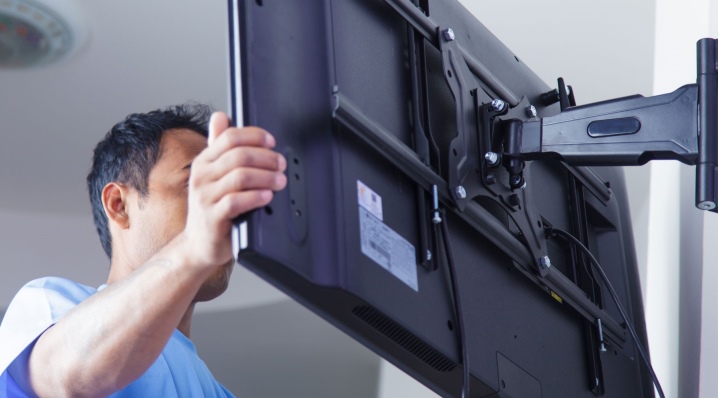
For the MIS-B - MIS-E standards, an additional letter identifier is used, which is written at the very end of the size code and indicates the location of the fastener relative to the center of the screen:
- WITH - in the center;
- T - above;
- V - from below;
- L - on the left;
- R - on right;
- T / B - up and down;
- L / R - left and right.
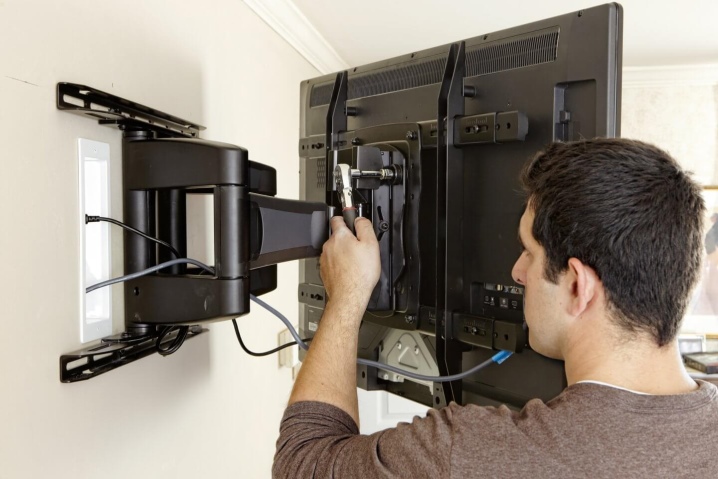
Types of fasteners
By design, VESA standards distinguish 3 types of wall mounts.
- Fixed - such a bracket allows you to fix the TV to the wall in one fixed position. These designs are simple and cheap, but when purchasing them, it is worth considering in advance the location of your screen, since it will be almost impossible to change the viewing angle in the future.
- Inclined - this option allows you to change the angle of the screen, but not its position vertically and horizontally. Well suited for situations where you need to provide good visibility from the sofa with the ability to adjust the viewing angle from other places.
- Swivel - the most complex, expensive and least reliable brackets that allow you to change the position of the screen in space. Usually they are installed in cases where it is often necessary to adjust the position of the TV for convenient viewing from different places (for example, in the kitchen from the table and stove).
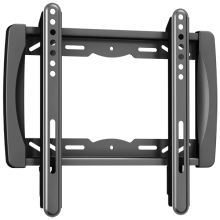
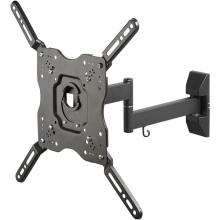
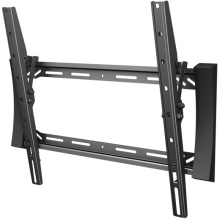
Selection Tips
note that VESA standards limit both the weight and the diagonal of the TV wall mountable at the same time. This is done so that the swivel and tilt options of the brackets retain their full functionality when connected to a TV with the recommended standard diagonal. Thus, mounting to a TV mount larger than the standard recommended size can limit the angle of rotation and tilt of the bracket, as well as make it difficult to connect all the necessary cables. Therefore, when purchasing a bracket, you need to make sure that it exactly matches the standard specified in the data sheet of your TV or plasma panel.
Another important parameter when choosing a fastening system is the minimum permissible distance between the TV and the wall. Usually this characteristic is indicated in the documents for the bracket. It depends on her whether you can connect all the necessary plugs to the TV suspended on the mount. Therefore, before purchasing a bracket, it is worth measuring the length of the plugs.
If your TV is not VESA compliant and has a non-standard mounting hole pattern, worth buying a universal bracket (they can be easily distinguished by the large number of mounting holes).
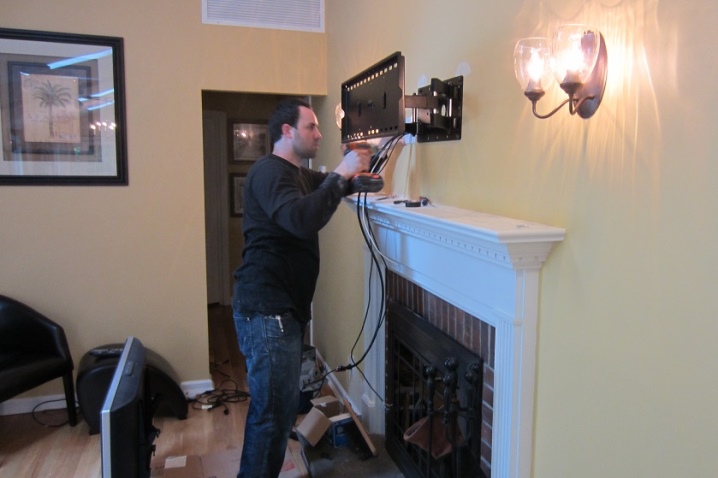
You can find out how to install the TV on the wall below.













The comment was sent successfully.